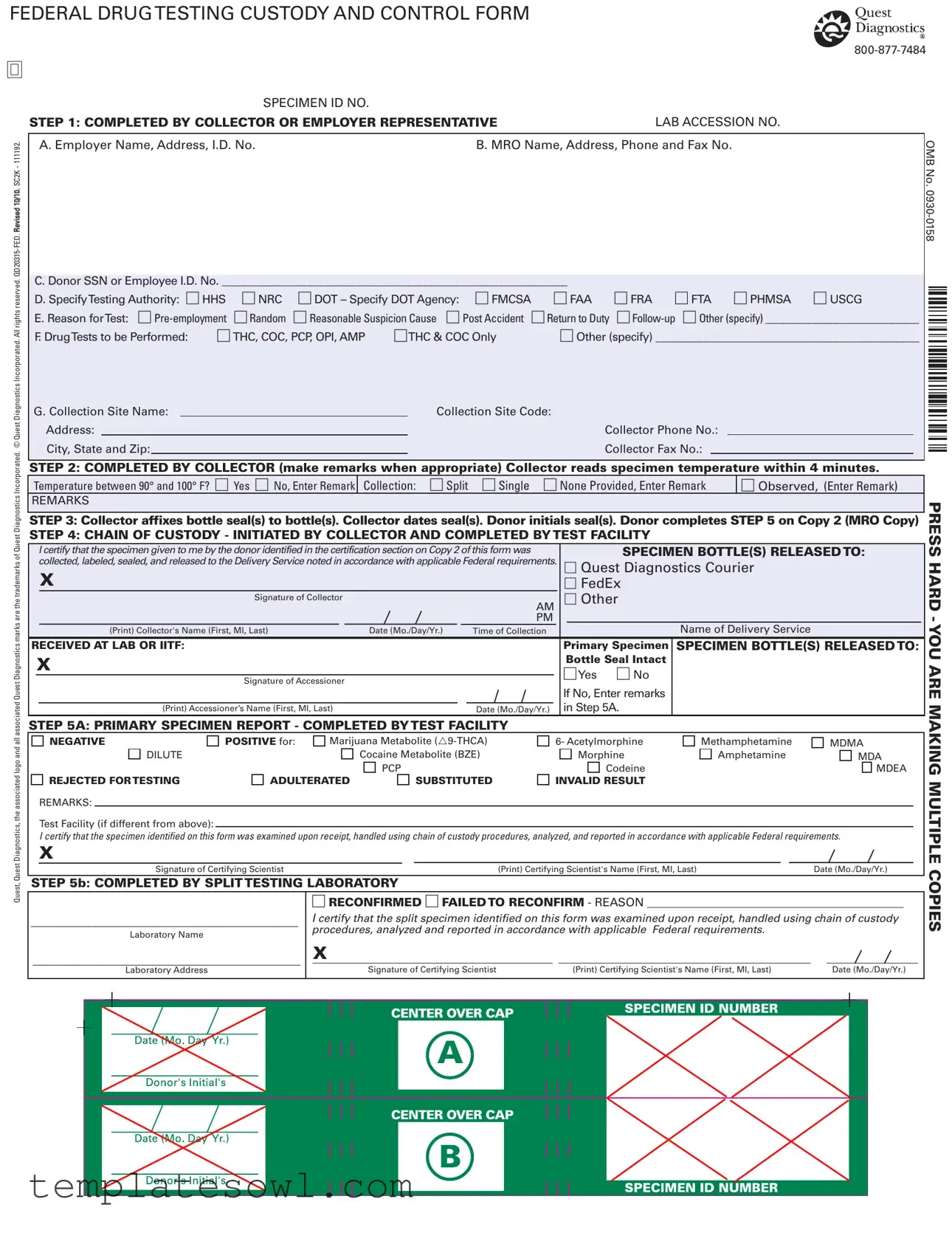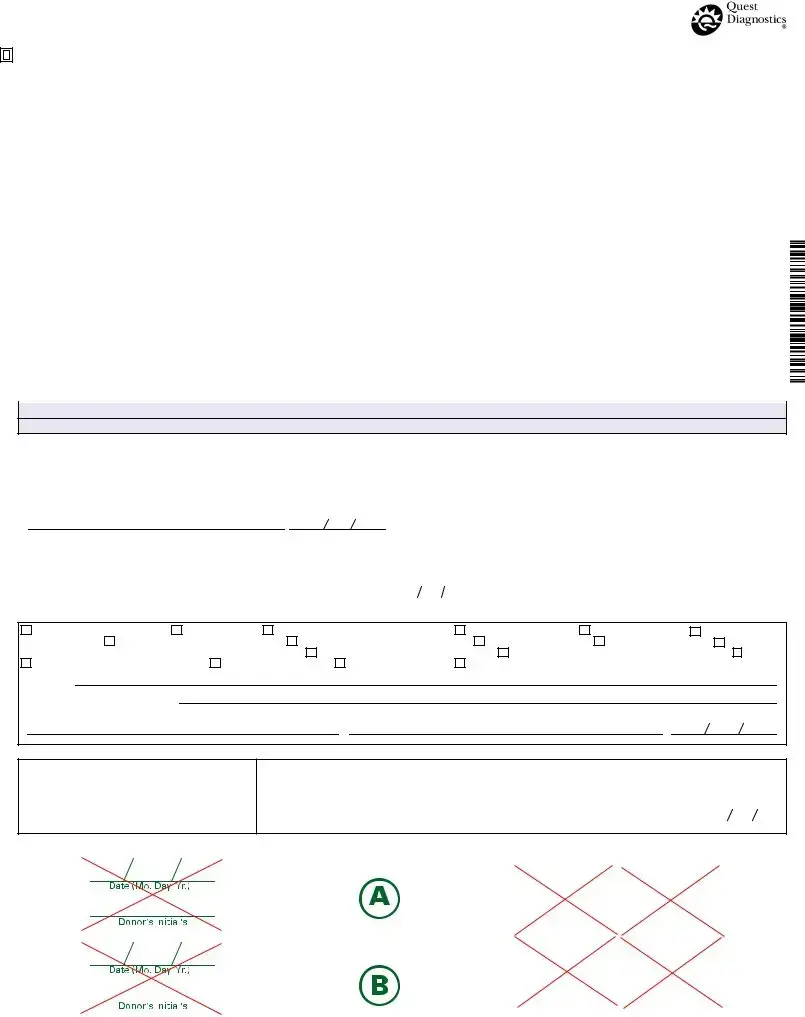What is the purpose of the Drug Screen form?
The Drug Screen form, formally known as the Federal Drug Testing Custody and Control Form, serves as a standardized procedure for collecting and handling urine specimens for drug testing. This form ensures that the testing process remains consistent and adheres to federal regulations. It documents the chain of custody and verifies that all the necessary steps are completed properly to eliminate chances for tampering or errors.
Who is responsible for completing the Drug Screen form?
The responsibility for completing the Drug Screen form primarily falls on the collector or the employer representative. They are tasked with accurately filling out each section, which includes details about the donor, testing authority, reason for the test, and the drugs being tested for. This detailed information is crucial for validity and compliance with federal requirements.
What types of drug tests can be performed according to the form?
The Drug Screen form allows for testing of various substances. Commonly tested drugs include THC (Marijuana), COC (Cocaine), PCP (Phencyclidine), OPI (Opiates), and AMP (Amphetamines). The form also provides options for specific combinations or for testing different drugs if specified. This flexibility ensures that testing can be tailored to meet specific employer policies or regulatory requirements.
How is the chain of custody maintained during the testing process?
Maintaining the chain of custody is vital for ensuring the integrity of the drug testing process. The collector initiates this by labeling and sealing the specimen bottles during collection. Each member of the testing process, from the collector to the laboratory, documents their handling of the specimen on the form. These records are crucial in establishing that the sample has not been tampered with and has been managed following federal guidelines throughout the entire testing process.
What happens after the specimen is collected?
Once the specimen is collected, the collector will seal the specimen bottles and fill out the form appropriately. The specimen is then sent to a designated laboratory for analysis. The laboratory performs the tests and provides results, which are documented on the Drug Screen form. If there are any issues, such as a positive or invalid result, the collection site will make further remarks on the form, ensuring a thorough record of the entire process.

